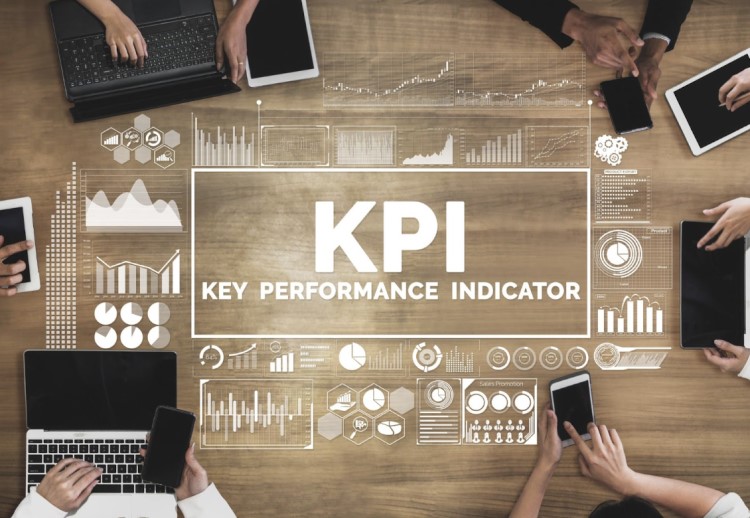Key Performance Indicators (KPIs) are specific, measurable metrics that evaluate the effectiveness of an organization in achieving its objectives. Unlike general metrics, KPIs directly tie to strategic goals. They provide a focused way to track progress, helping organizations make informed decisions that align with their long-term vision.
The primary purpose of KPIs is to offer actionable insights. While other metrics may provide data on various aspects of operations, KPIs highlight the most critical areas for improvement or success. By concentrating on key areas, KPIs help organizations prioritize resources and efforts, ensuring that they are consistently moving toward their goals.
Moreover, KPIs differ from other metrics in their strategic importance. General metrics might track day-to-day activities, but KPIs focus on outcomes that directly impact the organization’s success. This distinction makes KPIs essential for driving performance and fostering accountability across all levels of the organization. By regularly monitoring KPIs, organizations can quickly identify areas that require attention, enabling timely interventions that enhance overall performance.
Types of Key Performance Indicators
You can categorize Key Performance Indicators (KPIs) into leading and lagging indicators, each serving a distinct purpose. Leading indicators predict future outcomes, offering insights into potential performance. They help organizations make proactive adjustments before results materialize. For example, in sales, the number of new leads generated might indicate future revenue growth.
Conversely, lagging indicators reflect past performance, providing a retrospective view of outcomes. They measure the results of actions already taken, offering a clear picture of success or failure. Revenue and profit margins are typical lagging indicators. While they confirm whether goals were met, they are less useful for making immediate changes.
KPIs can also be divided into quantitative and qualitative types. Quantitative KPIs rely on numerical data, offering objective measures of performance. Metrics like sales figures, customer acquisition rates, and employee turnover are examples. These KPIs provide clear, measurable insights that are easy to track and compare over time.
On the other hand, qualitative KPIs assess aspects of performance that are not easily quantified. They focus on subjective measures, such as customer satisfaction or employee engagement. These KPIs often require surveys, interviews, or feedback to gauge performance. Although they are less precise, qualitative KPIs are essential for understanding factors that influence long-term success and customer loyalty.
Setting Effective Key Performance Indicators
Setting effective Key Performance Indicators (KPIs) begins with aligning them with your business objectives. KPIs should directly reflect the goals your organization aims to achieve. This alignment ensures that every KPI you track contributes to the overall strategy. When KPIs are closely tied to business objectives, they provide clear direction and help maintain focus on what matters most.
To be effective, KPIs must adhere to the SMART criteria—Specific, Measurable, Achievable, Relevant, and Time-bound. Specific KPIs clearly define what is being measured, leaving no room for ambiguity. Measurable KPIs provide quantifiable data, making it easier to track progress. They should also be Achievable, set at a level that is challenging but attainable. Relevance ensures that the KPI directly impacts business objectives, avoiding metrics that don’t contribute to strategic goals.
Lastly, KPIs should be Time-bound, with a clear timeframe for achieving the desired results. This characteristic allows for regular monitoring and timely adjustments. By following the SMART criteria, organizations can develop KPIs that not only guide performance but also motivate teams to achieve specific, impactful outcomes. This structured approach to setting KPIs enhances their effectiveness, ensuring they drive real progress toward your business goals.
Monitoring and Analyzing Key Performance Indicators
Monitoring and analyzing Key Performance Indicators (KPIs) are crucial for ensuring that your organization stays on track to meet its objectives. Various tools and techniques can help you effectively track KPIs. Dashboards and analytics software offer real-time visibility into performance, allowing you to monitor progress continuously. These tools can automatically aggregate and visualize data, making it easier to spot trends and anomalies. Additionally, regular reports and scorecards provide structured reviews of KPIs, ensuring that all stakeholders remain informed.
However, tracking KPIs is only part of the process; interpreting KPI data is equally important for decision-making. By analyzing the data, you can identify patterns and correlations that reveal the underlying causes of performance issues. For example, a decline in customer satisfaction scores might correlate with an increase in response times. Understanding these relationships allows you to take targeted actions that address the root causes rather than just the symptoms.
Furthermore, interpreting KPI data helps you make informed decisions about resource allocation and strategy adjustments. If certain KPIs indicate that a particular strategy is underperforming, you can pivot or reallocate resources to more effective initiatives. This data-driven approach ensures that decisions are based on solid evidence, enhancing the likelihood of achieving desired outcomes. Ultimately, effective monitoring and analysis of KPIs empower organizations to make proactive, informed decisions that drive sustained success.
Adjusting and Evolving KPIs
Adjusting and evolving Key Performance Indicators (KPIs) is essential to maintain their relevance and effectiveness over time. Continuous improvement involves regularly reassessing your KPIs to ensure they still align with your business objectives. As your organization grows or shifts focus, certain KPIs may need to be refined or replaced to reflect new priorities. This reassessment ensures that your KPIs remain meaningful and continue to drive desired outcomes.
Moreover, KPIs must be adaptable to changing business environments. Market conditions, technological advancements, and competitive landscapes can all influence what metrics are most important. As these factors evolve, KPIs should be updated to capture new opportunities or address emerging challenges. This flexibility allows organizations to stay responsive and agile, ensuring that performance measurement keeps pace with the broader business context.
Regularly adjusting KPIs also helps prevent complacency. When companies commit to evolving their KPIs, they foster a culture of continuous improvement. This proactive approach encourages teams to strive for higher performance levels and remain focused on strategic goals. By adapting KPIs to reflect current realities, companies can maintain momentum and continue progressing toward long-term success.


